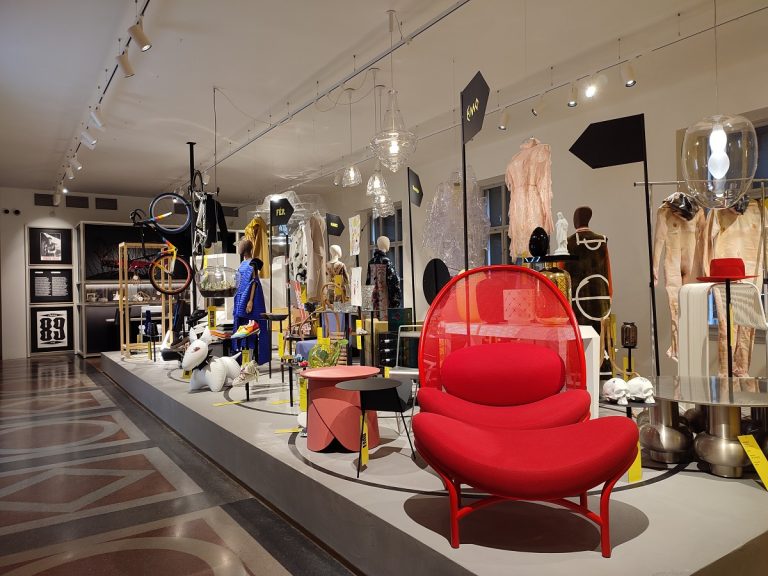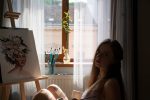The Museum of Applied Arts is open again to welcome visitors for a number of soul-nourishing, free-of-charge exhibitions of art, design and fashion. Visitors can also expect to see some of the most recent artistic work of Lucie Koldova and Jiří Pelcl. Photo credit: MK / BD.
The Museum of Applied Arts in Brno has been closed for a long time, but it reopened in mid-November, and is now welcoming visitors with permanent and temporary exhibitions of art, design and fashion, all with a futuristic touch. While the general admission is free, visitors can also pay CZK 195 to see the recent spectacular work of Lucie Koldova and Jiří Pelcl. Visiting the museum would be an ideal weekend activity in the city, if you are searching for meaningful things to do in Brno.
The museum is one of the cultural hubs of Brno, even though it does not get the appreciation it deserves. The interior of the building is a piece of traditional art in itself, while the museum’s modern exhibitions bring the space up to date without disrupting the mood of it.

The museum has just adopted a new concept, ‘Art, Design and Fashion’, showcasing some of the most valuable and unique work of renowned Czech designers who are not on display anywhere else in the country. The exhibition tries to show the interrelations between the three concepts of art, design and fashion with a special focus on modern artwork produced in the new millennium, under the name ‘2000+’.
This new concept introduced to the museum’s exhibition comes from the great ‘open call for artistic work’ that prompted more than 200 artists to submit hundreds of artworks to be presented at the premises, 68 of which were selected and are now exhibited at the museum. One of the gigantic contributions to the new exhibition is Liběna Rochová’s extensive clothes and accessories collection of 30 years. Rochová’s work aims to reflect the increasing demand for social and environmental responsibility in fashion-making, emphasizing the importance of quality fashion, rather than quantity. Through the exhibition, we also learn more about the international artist Rochová’s place in Czech design and fashion, having won the Czech Grand Designer Competition in 2015, and being included in many successful exhibitions around the world.

Another interesting part of the exhibition is The Cave, which takes visitors time-travelling, with everyday items preserved perfectly over decades. It aims to portray the long story of design linked to significant inventions and discoveries that form the milestones of all the industrial revolutions from the 18th century to the present. The exhibition suggests that design is linked to the evolution of mass production, but with every product people seek ways to make their lives more comfortable while bringing a more and more creative perspective to it. Here, visitors can observe a Central European timeline of design in clothes, machines, furniture and art.

Those interested in glass, porcelain and ceramics will adore the Black & Light exhibition, which collects a great number of artistic craftworks made of these materials together in two huge rooms – one decorated in white, and one in back. The richness of the exhibition here is mindblowing, and it is a great opportunity for those who like to get closer to the art to see the beauty in tiny details.
One of my favorite exhibitions was the generous collection of the recent artwork of Jiří Pelcl, located on the top floor of the museum. Pelcl’s collection includes his 40-year design output, divided into seven sections: Wood, Metal, Glass, Porcelain, Textiles, Plastic and Paper. Pelcl playfully and creatively worked with these seven industrial materials for artistic and functional purposes. In each room dedicated to each material, visitors can learn about the history of these materials as much as Pelcl’s touch, vision and experience in working with them. Pelcl successfully demonstrates ways of using these materials with an artistic touch by learning and cultivating the gifts of nature through an artisan eye. The sections are equipped with pieces of these materials that visitors can touch and feel as well.

The Moravian Museum of Applied Arts is located at Husova 536, a few steps away from Ceska or Silingrovo Namesti tram stops. The museum is open every day except Monday and Tuesday, from 10am to 6 pm.













